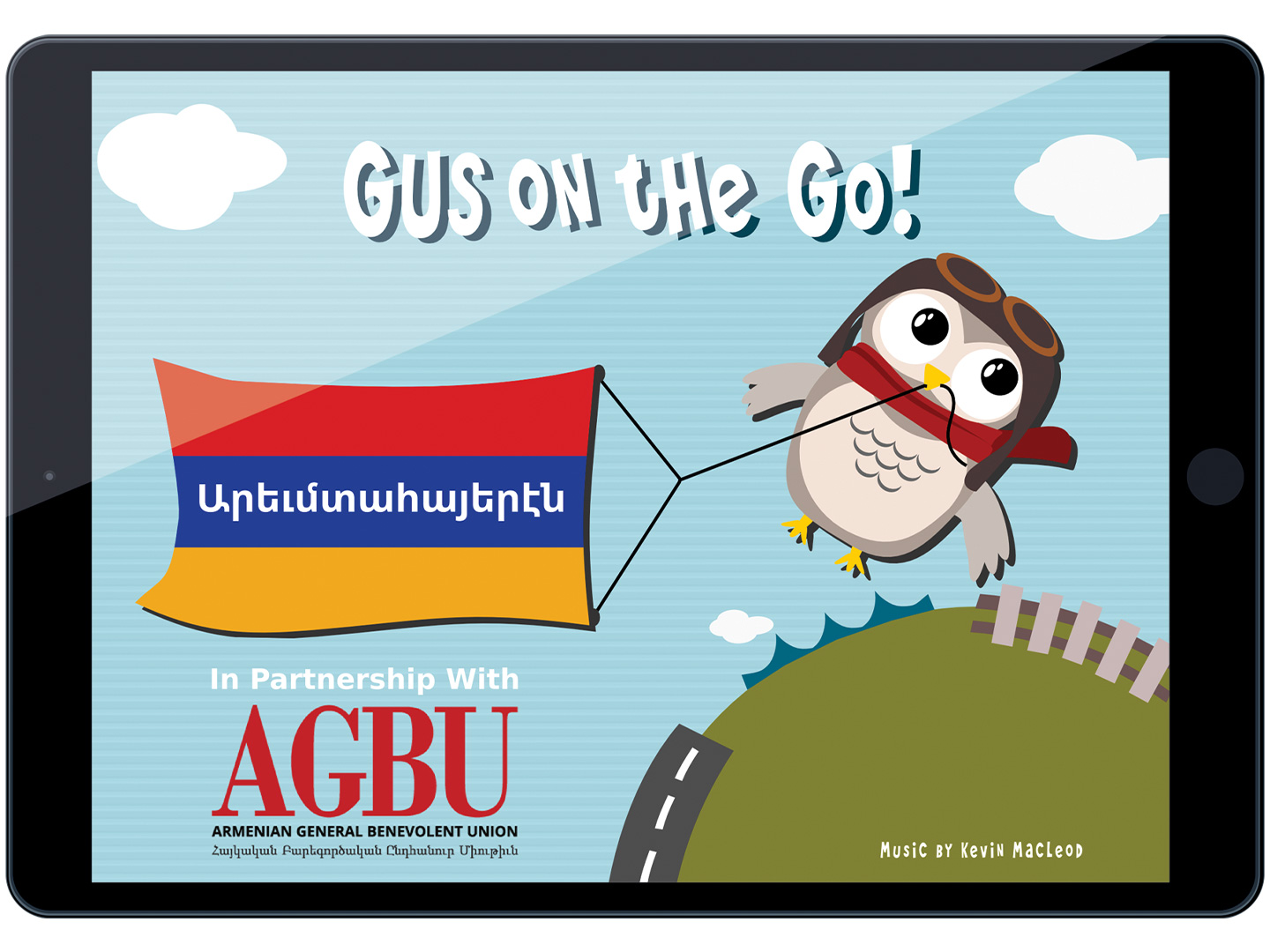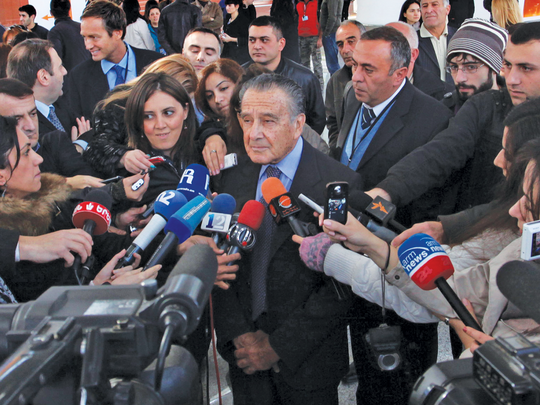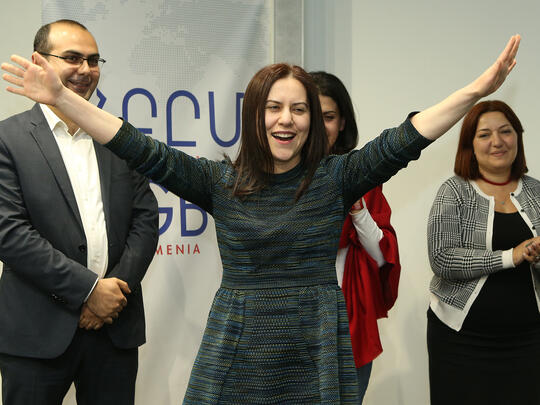Start any serious conversation about how to promote Latin America-Armenia relations
and you’ll quickly come to an impasse: the language gap between native Spanish and Portuguese speakers on the one side and native Armenian and English speakers on the other. This puts Latin American-Armenians at a distinct disadvantage compared with their English speaking counterparts up North, with English as the international business language in Armenia. But as Professor Nelson Baloian of the University of Chile points out, the Armenian language barrier in Latin America is the result of a steady decline in Armenian immigration after the Genocide, a trend that continues to this day.
The Immigration Factor
In the latter half of the 20th century, Latin America’s political instability in authoritarian or communist regimes was a key factor in stemming new waves of Armenian immigrants, especially for those fleeing countries with similar unpredictable and oppressive governments. But Professor Baloian adds another layer of analysis, “There was a time when Armenians turned to Latin American countries like Brazil and Argentina because they had strong economies based on the raw materials they exported, despite their corrupt governments especially after the two world wars,” he explains. “However, during the mass emigrations from Arab countries, the prices of Latin American raw materials were in decline. The United States, Canada, Australia, and Europe, with more diverse industries, were the preferred option.” He also notes that after the fall of the Soviet Empire, the majority of Armenian immigrants also turned to North America and Europe.
Despite this, Argentina, Brazil and Uruguay were still able to maintain viable Armenian communities which had already reached the critical masses to successfully establish high quality Armenian schools, which appealed not only to parents of Armenian students but also non-Armenians seeking a good education for their children. Nevertheless, these communities no longer speak Armenian in the home. Professor Baloian observes that “smaller communities which have the same problem are located in Mexico and Venezuela and cities in Argentina and Brazil with fewer Armenian residents.”
The Passion Factor
Dr. Yervant Zorian, an AGBU Central Board Member is founder and creator of the AGBU Armenian Virtual College (AVC), which is on the front lines of overcoming Armenian language barriers with its web-based language, history and culture courses for individuals and hybrid classrooms. Dr. Zorian agrees that the tight-knit community life in Argentina, Brazil and Uruguay accounts for the strong desire to maintain identity. “We discovered that the Latin American-Armenians are extremely passionate about Armenia and Armenians, despite the language impediments. Yes, they are up to the fourth generation but they live as they used to live, in close proximity to each other. The community life is strong in Buenos Aires, in São Paulo, even in Santiago (Chile). The youth in their 20s are close with each other. So this strong connection to their Armenianness means that they have the potential to engage with their ancestral homeland.”
Dr. Zorian says that from day one, AVC developers chose Spanish to be one of the instruction languages, noting that in the process, they realized the Spanish to use is not the Castilian dialect from Barcelona, but the one from Montivideo in Uruguay.
“We said there’s so much going in Latin America, and even though Brazilians speak Portuguese, they understand Spanish very well. To build the Spanish content we needed translators, editors, narrators. For that we enlisted our AGBU network in Latin America,” he explained.
One such Spanish instructor is Gohar Gevorgyan, who reflects on her experience with Latin American-Armenian students. She concurs that not knowing the Armenian language does not necessarily correlate with the desire to connect with one’s ancestral identity. “With the usual elements of the Diaspora such as churches and schools, clubs and news-papers or radios, Armenian life continues in the main centers of Buenos Aires, São Paulo and Montevideo, along with smaller communities in Venezuela, Chile and other places,” she says, also referring to Argentina as a source of key investments in Armenia, including the Zvartnots International Airport, the postal service, as well as participation in the agricultural sector. “Argentine-Armenians jealously guard the customs and language that unite them with their homeland a century after their ancestors fled the genocide.”

Gevorgyan says that each AVC student has different motivations for learning: planning a trip to Armenia, repatriation, and a great desire to live and work in their homeland. “Among my students, I even remember participants from Latin America, particularly Mexico, who didn’t have Armenian roots and were just interested in our rich culture, history and traditions. When asked what they expect to get out of the AVC experience, most respondents say it’s to learn to speak Armenian, fluently, understand Armenian, or communicate with people when they travel to Armenia.

After completing the AVC online courses in Spanish, Gal Tamir of Chile found, “I became more aware of the Armenian culture and learned to love and to feel a part of it. Even though the distance from Chile to Armenia is great, I always felt warmed by my instructor and the entire AVC academic department.”
AVC Hybrid for the Formal Classroom
In 2010, the AGBU Marie Manoogian Institute in Buenos Aires, Argentina, expressed interest in the AVC Hybrid Education Program, which is designed for classroom learning. After the teachers were trained by AVC faculty, the program became an inseparable part of the Institute’s language-learning curriculum. From the first two classes with 29 students, there are now around 120 students each academic year.
Rosita Youssefian, who was chair of the school’s Armenian Studies department for over 30 years, describes AVC as filling a much needed gap. “The courses are offered at different levels and in an engaging manner using all the advantages of innovative teaching methods. Once grammatical and conversational topics become more complex, students gradually learn to use and comprehend more complex structures and successfully get to the next level…The Forum helps students learn various topics, conduct research and share their findings. Videoconferencing promotes verbal interaction in Armenian and connects students from different schools in the Diaspora.”
The Hay Azkayin Turian Varjaran in São Paolo, Brazil joined the AVC Hybrid in 2011. Since then, more than 80 students have completed AVC courses. Teacher Mari Vardanian states: “This method of teaching is very popular with our students, and it is attractive and encouraging.”
AVC Hybrid student Gabriel Gonçalves Sena says: “If someone wants to learn a language, this method is great; it helps to learn the pronunciation easily. I especially like the lessons and exercises.”

As for Chile, the newly inaugurated Hye Doun community center has attracted new interest from the local community in Armenia learning Armenian. Professor Baloian notes, “We have three young members who speak Armenian pretty well but have no experience in teaching, nor possess relevant teaching material. This turned us toward the hybrid modality of the AVC…the richness and motivational effect of the multimedia material, combining text and pictures with sound and video, has been proven in many scientific works.” He also stresses that with local tutors and collaborative learning, community life has strengthened, bringing members even closer together.
Banner photo by David Fuentes / Adobe Stock




















